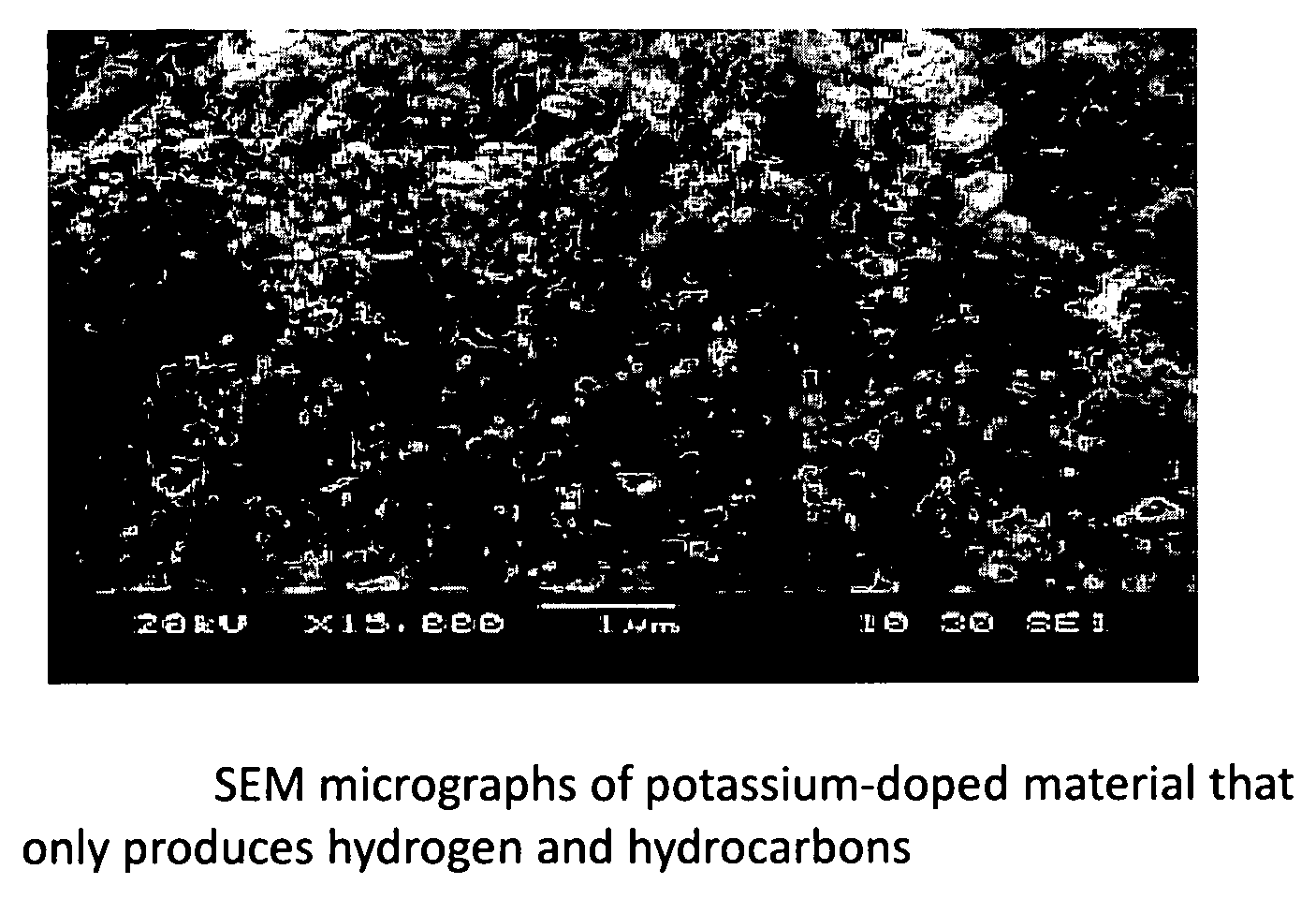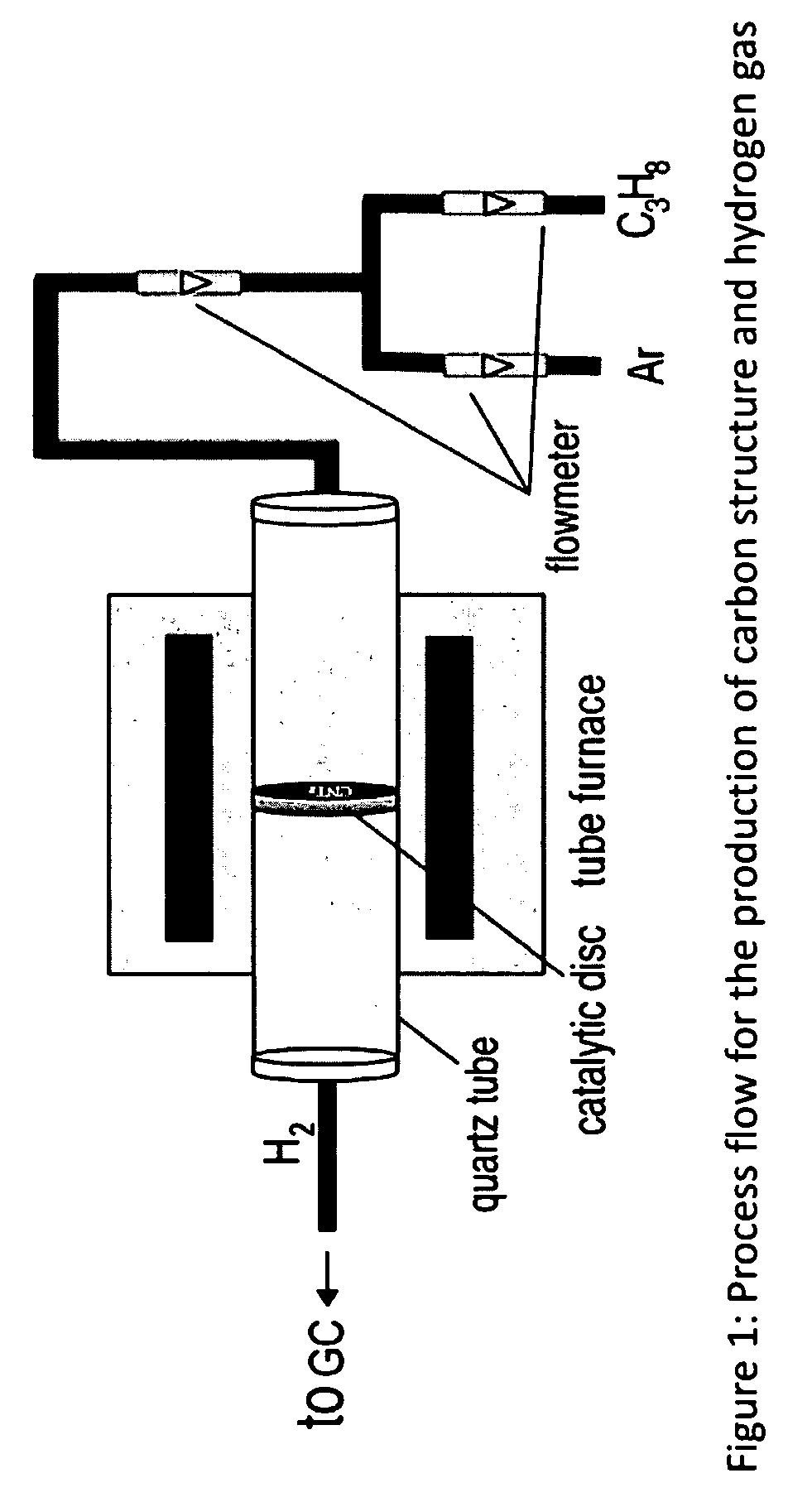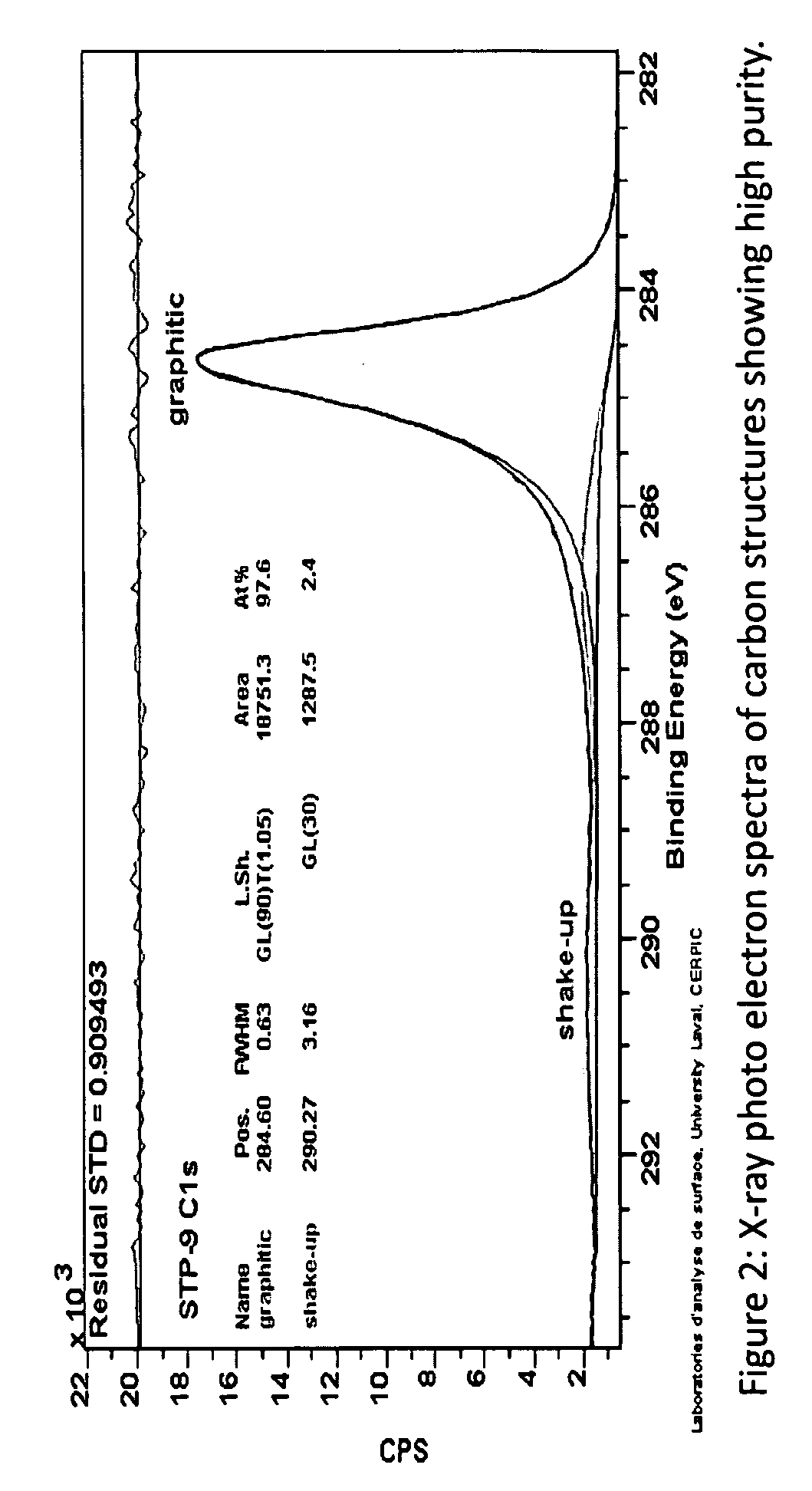Novel catalyst to manufacture carbon nanotubes and hydrogen gas
- Summary
- Abstract
- Description
- Claims
- Application Information
AI Technical Summary
Benefits of technology
Problems solved by technology
Method used
Image
Examples
example 1
[0121]In a typical preparation of the heavy metal catalyst, 15.2520 g Ni(NO3)2.6H2O and 1.4044 g Cu(NO3)2.3H2O (amounts corresponding to 25% w / w Ni and 3% w / w Cu in the final catalyst) were dissolved in 10 mL distilled water (concentration for Ni(NO3)2.6H2O 5.24 M and for Cu(NO3)2.3H2O 0.58 M). This was minimum appropriate volume to get the optimum viscosity of solution so that it could be easily absorbed by the support disc. The critical flow of the precipitating agent is in between 2-5 mL / min. The temperature of reaction is 70-80° C. The solution was poured drop wise on the SCHOTT-DURAN filter disc (pore size 40-100 μm, diameter 33 mm), previously dried at 120° C. for 4 hours, until it was saturated with the solution. The disc was then dried at 90° C. for 4 hours and impregnation process repeated until the entire solution was consumed. After drying the impregnated disc overnight at 110° C., it was calcined at 650° C. for 6 hours.
example 2
[0122]High surface area catalyst embedded in a dried powder form is obtained by first combining the ceramic material with the metal salt solution in a vessel which is stirred continuously at room temperature for 0.5 hours. In the second step, 28% ammonium hydroxide (or any other precipitating agent) is added slowly, drop by drop, using such delivery devices as a HPLC pump to the vessel till the pH of the slurry reaches 12-14 as measured by a pH meter installed inside the vessel. The third step comprises of heating the slurry to 80-90° C. and keeping it at that temperature for 5-6 hours and during this time the pH comes down to 6-7. It is necessary to add water to the slurry to keep the volume constant to allow for evaporation. When the pH reaches between 6 and 7, this indicates deposition of Ni:Cu:K salts or any other metal salts on to ceramic support. In the fourth step, the slurry is filtered and washed 4-5 times with deionized water to remove any unreacted alkali (precipitating a...
example 3
[0124]Cants supported material prepared by the co-impregnation method described in the prior art with addition of copper and molybdenum, followed by drying and calcination at 600° C. for 6-hours.
Catalyst Designation% Cu% MoCNTSurface area m2g−15% Cu:10% Mn / CNTs5.4311.73Balance176
[0125]The temperature for the production of carbon fibers is 450° C. and SWCNTs 550° C., multi walled CNTs (MWCNTs) is around 600° C. The critical flow rate is 25-30 mL / min
PUM
| Property | Measurement | Unit |
|---|---|---|
| Temperature | aaaaa | aaaaa |
| Temperature | aaaaa | aaaaa |
| Temperature | aaaaa | aaaaa |
Abstract
Description
Claims
Application Information
 Login to View More
Login to View More - R&D
- Intellectual Property
- Life Sciences
- Materials
- Tech Scout
- Unparalleled Data Quality
- Higher Quality Content
- 60% Fewer Hallucinations
Browse by: Latest US Patents, China's latest patents, Technical Efficacy Thesaurus, Application Domain, Technology Topic, Popular Technical Reports.
© 2025 PatSnap. All rights reserved.Legal|Privacy policy|Modern Slavery Act Transparency Statement|Sitemap|About US| Contact US: help@patsnap.com



